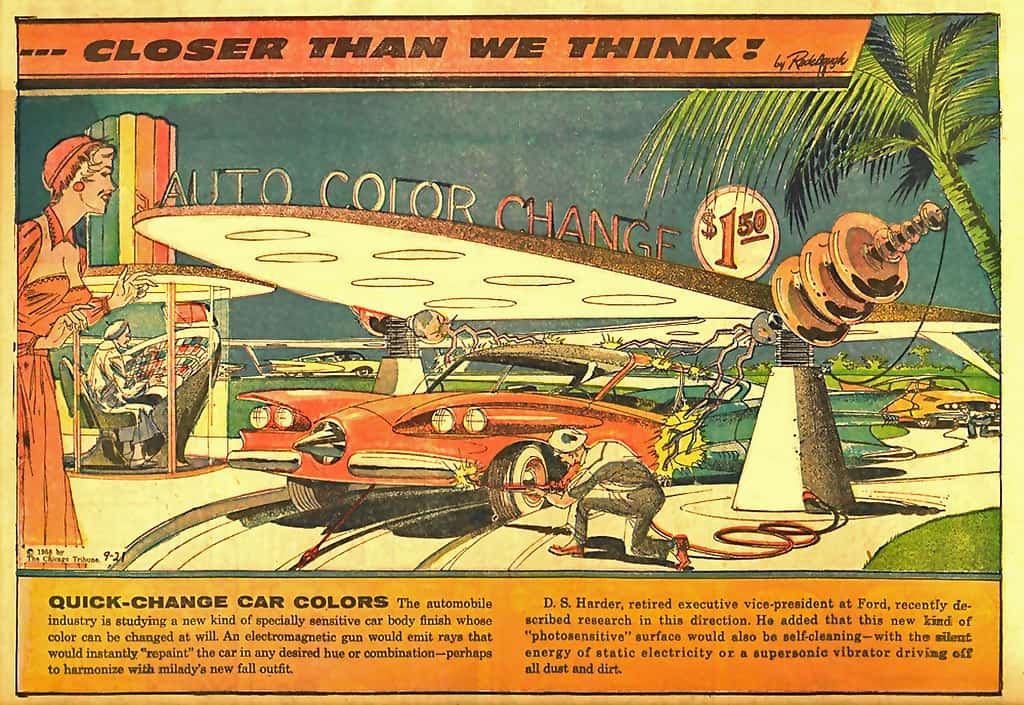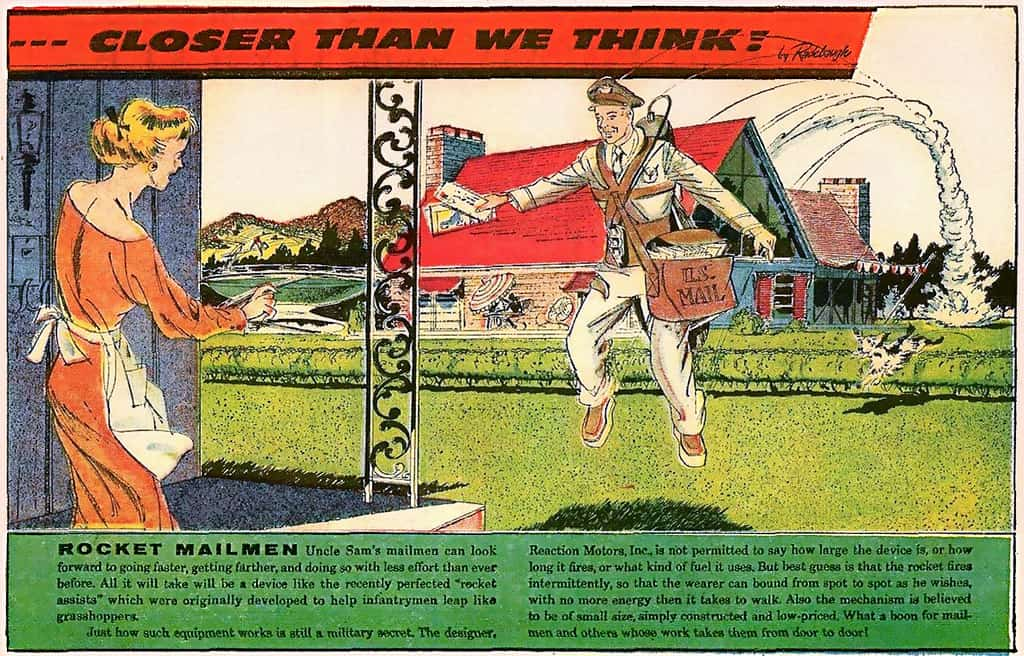




Associated curator
Director of the Lieu Unique
Patrick Gyger trained as a historian, art historian and philologist, and was director of the Maison d'Ailleurs, the Museum of Utopia, in Switzerland from 1999 to 2010. From 2001 to 2005, he was also the artistic director of the festival Utopiales in Nantes. In 2008, he opened Jules Verne Space, dedicated to Extraordinary Voyages. Since 2011, he has been the director of Lieu Unique, the national platform and contemporary culture center in Nantes.
Futures for sale
A bit of SF
Science fiction is a system whose main purpose is to produce myths featuring literary, graphic, televisual, or cinematic settings that lead to the emergence of a highly realistic universe. While the fantasy genre feeds on the disturbances created by the intrusion into our everyday lives of something that belongs to a parallel world, and fairy tales offer worlds that have no connection with our reality, science fiction likes verisimilitude. Its method consists of placing elements within our everyday existence (a machine that travels through space or time, a modified or replicated human being, etc.), which it portrays in an extreme manner, or which it challenges with unexpected situations. Its purpose is then to observe their reactions, adaptations, or metamorphoses in a new way. In doing this, science fiction strives to produce greater meaning and impact our world.
Another virus: The Bright Future
It’s undoubtedly from the 1930s through the post-World War II years that science fiction most intensely played this role as a machine to unpack everyday life, seeking to draw out sometimes its absurdity, other times its greatness. At that time, many links were established between imaginary visions that were becoming increasingly real, and a reality that was becoming increasingly complex, by hinting at certain facets of real life that had previously remained in the shadows.
Throughout these decades, by focusing on the progressive availability to the public of innovative technologies (television, color photography, etc.), then on the reconstruction of a devastated world, science fiction became a formidable virus that spread throughout reality and found expression even down to the smallest aspects of everyday life: automotive design, fashion, architecture, and industrial aesthetics, through a process of exporting its myths. It was all made even easier by the fact that science fiction frequently used the future as a testing ground, and that Progress, especially through technology, was already a well-established doctrine.
The most alluring and infectious of myths generated by science fiction was, along with the conquest of space, that of a “Bright Future”. Everything it promised became the dominant functional guidebook for the era and a vision of the world that was almost totalitarian. Its watchword was the possession of manufactured objects whose operation was clearly more akin to a nearly magical vision of the universe than to the practical application of scientific advances and new technologies. Though all science fiction in the second half of the 20th century did not follow this outline, this tendency clearly predominated most popular productions, such as blockbuster films or magazine covers.
The imagery, even more than the concepts conveyed by these media, influenced fields that were sometimes quite distant from science fiction. Thus, commercial illustrators created futuristic environments for all sorts of consumer goods. Arthur Radebaugh, Syd Mead, and many other anonymous artists happily set out to fulfill orders to represent, supposedly in a serious manner, the automobile of tomorrow or mineral mining on the Moon. The iconography was the same as that seen in pulps, those cheap magazines where science fiction found an audience of teenagers dreaming of intrepid heroes armed with lasers, robot servants, food pills, and flying automobiles.



However, in advertising, the future was more customer oriented. It wasn’t just about the world of tomorrow nor the coming century. The year 2000 was not so much a date that allowed for unfettered imaginings as a place where it was possible to situate objects that the smart consumer could possess in reality before they became common knowledge, thus, before everyone else. The future became a form, a style, and a clear leitmotif in the promotion of specifically new goods (since they came from the future) that were therefore intrinsically desirable. By selling the future, it was alright to obtain what came straight out of it and whatever bore its hallmarks.
Advertisements claiming to be futuristic did not always bother to be relevant. Of course, a Streamlined fridge, or anything automated, would be easily associated with the future. But any common consumer good could obtain a futuristic sheen. After all, the makers of whisky aged 6 or 12 years were clearly thinking about the future when they were distilling it…In any case, in graphic or industrial design departments, what’s new was always the order of the day. It was therefore not unusual for a complete section of a brand (which was the case, for example, with certain automotive manufacturers) to work on futuristic scenarios and envision styles or products that would never see the light of day, producing possibly the very first pieces of design fiction. But here, it was more a promotional approach than one of foresight.
At this time, therefore, designers massively adopted the future. As John Crowley wrote, “the technological utopia of the mid-20th century differed from other future worlds in that it seemed to be taking shape in the present, almost on a daily basis, coming closer to reality with each newsreel, each skyscraper, each issue of Life magazine.” And among the designers of this 20th century, no one more than Norman Bel Geddes reinvented newness in all areas of design (see John Crowley, “Norman Bel Geddes, The Man who invented the 20th Century”, in Reading Backwards, Subterranean Press, 2019). Futurama, his contribution to the 1939 World’s Fair, whose sub-title is The World of Tomorrow, remains an essential stage in imaginary visions of the future in the 20th century, and borrowed its methodical, realistic approach from science fiction.

Imitative literature
Developing essentially in the United States, before spreading out to Europe, the science fiction of the 1930s through the 1950s in the 20th century was a resolutely imitative form of literature. It was the barely distorted, not very extrapolated reflection of American society, and played to its many shortcomings, as much as it denounced them: xenophobia, religious fanaticism, the omnipresence of advertising, the rise of the legalistic society, the colonialist temptation, rampant militarism, an unbelievably clear conscience, and a superiority complex.
Therefore, when aliens land on our good old planet Earth, there would be no communication problem: the alien would speak Earth language. Because for years already, the Alpha-Centaurians had been receiving our radio and television signals, so they had more than enough time to learn the dominant language in this world (English). When, conversely, armed with only his mother tongue, an Earthling would land on Alpha-Centauri, communicating would be no more of a problem than in the opposite direction. He would then call upon an Automated Translator, a little box hooked onto his belt, featuring a microphone on one end and a speaker on the other, with, between the two, a highly scientific “system” whose details are not explained, promising real-time translation. The Automated Translator: here was a beautiful science-fiction object that more than one individual attempted to shift from imaginary visions into everyday life, and which today actually operates (to varying levels of effectiveness) on the internet. There are many such examples, like the Dick Tracy TV watch, which is nothing less than the equivalent of our new connected watches.
The fact remains that today, we seem to be struggling to recapture such energy to portray the future. Even though this future is the love child of runaway consumerism that (almost) no one wants to see repeated today, the optimism, sometimes blissful, often fallacious, that it bathed in, seems to be missing today. We can be sure, however, that, in the face of the crises we’re experiencing, science fiction, with its complex vision of our tomorrows, still has something to say. Let’s hope that its evocative power will foster visions that can inspire a wide audience and change the way we see things, once again.
(Some sections of this article are taken from “Les nouvelles voitures volantes” [‘The new flying cars’] by Andreas Reinhard and Patrick Gyger, Favre, 2020).